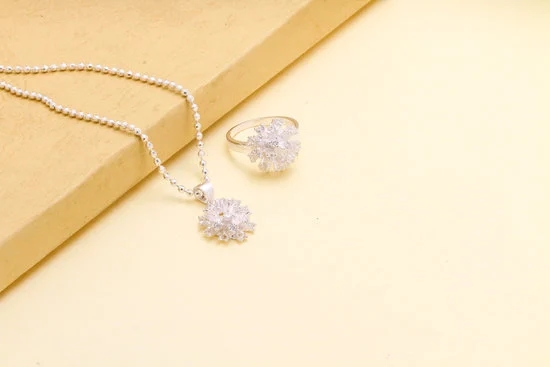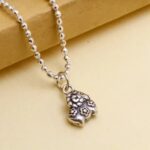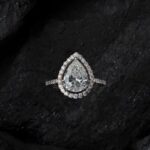When purchasing jewelry, particularly diamonds, many consumers are often curious about the presence of serial numbers. These unique identifiers are commonly used in various industries for authentication and traceability purposes. However, their use in the diamond industry is a topic that raises questions. This article aims to address these concerns by examining the importance of serial numbers on jewelry diamonds.
Serial numbers play a vital role in ensuring transparency and authenticity in the diamond industry. They provide a means of identification and tracking throughout the supply chain, from mining to manufacturing to retail. By assigning a specific serial number to each diamond, it becomes easier to monitor its journey and verify its origins. This level of transparency helps build trust between consumers and sellers.
In the diamond industry, different types of diamonds exist, each with their own characteristics that make them unique. Understanding the significance of serial numbers in relation to these different types allows for better comprehension of their purpose. From colorless diamonds to fancy colored gems, all stones can be authenticated and traced through their serial numbers. This allows buyers and sellers alike to have confidence in the quality and value of a diamond.
By exploring the role of serial numbers in diamond authentication and traceability, this article sheds light on whether small diamonds on jewelry have these unique identifiers. Unveiling the truth behind this common inquiry can help consumers make more informed decisions when purchasing diamond-studded jewelry. Additionally, understanding the advantages and disadvantages of having serial numbers on small diamonds will provide further insight into their significance.
Overall, this article seeks to educate readers on how to identify serial numbers on small diamonds as well as emphasize their impact on the value and resale potential of jewelry. Lastly, tips will be provided for buyers seeking to verify the authenticity of small diamond jewelry utilizing these important identifiers. With this knowledge, consumers can confidently navigate the world of jewelry purchases with a deeper understanding of serial numbers’ future prospects within the industry.
Understanding the Significance of Serial Numbers in the Diamond Industry
The diamond industry is one that relies heavily on the use of serial numbers to authenticate and trace diamonds. These unique numbers serve as an identification tool, providing valuable information about a diamond’s origin, characteristics, and history. Understanding the significance of serial numbers in the diamond industry is crucial in ensuring transparency and maintaining consumer confidence.
Serial numbers on diamonds play a vital role in diamond authentication. Each diamond is assigned a unique serial number that is etched or laser-inscribed onto its surface. This number serves as an individual fingerprint for each stone, allowing it to be easily identified and traced back to its source.
This is particularly important in combating issues such as diamond smuggling and counterfeit diamonds. By having a serial number, consumers can have peace of mind knowing that they are purchasing genuine and ethically sourced diamonds.
Additionally, serial numbers provide important information about a diamond’s characteristics. These include details such as the carat weight, cut, color, clarity, and grading reports. These characteristics determine a diamond’s quality and value. By having serial numbers linked to these characteristics, consumers can make informed purchasing decisions based on accurate information.
Moreover, the significance of serial numbers extends beyond authentication and provides traceability in the diamond supply chain. The issuance of serial numbers helps track a diamond from its mine of origin to its journey through various stages such as cutting, polishing, certification, and eventually reaching retailers or consumers. This transparency promotes ethical practices within the industry by ensuring that diamonds are sourced responsibly without any involvement in conflict or human rights abuses.
The Different Types of Diamonds and Their Characteristics
Diamonds are one of the most coveted gemstones in the world, valued for their brilliance, durability, and rarity. However, not all diamonds are created equal. There are several different types of diamonds, each with its own unique characteristics that determine its quality and value.
One of the most well-known types of diamonds is the white or colorless diamond. These diamonds are prized for their clarity and lack of color, as they allow light to pass through and reflect off the facets, creating a beautiful sparkle. White diamonds are graded on a scale from D (colorless) to Z (light yellow or brown), with D being the highest grade and most valuable.
Another type of diamond is the fancy colored diamond. These diamonds exhibit vibrant hues such as pink, blue, green, or yellow due to impurities or structural defects. Fancy colored diamonds can be extremely rare and valuable, especially if they display intense saturation and high clarity.
Diamonds also come in different shapes and cuts. The round brilliant cut is the most popular shape for diamond engagement rings due to its exceptional sparkle and fire. Other popular shapes include princess cut (square), emerald cut (rectangular with step-like facets), pear-shaped, oval-shaped, marquise-shaped (elongated with pointed ends), cushion cut (square with rounded corners), and radiant cut (square or rectangular with cropped corners).
When it comes to purchasing diamond jewelry, it is important to understand these different types of diamonds and their characteristics. This knowledge will help buyers make informed decisions based on their preferences and budget. Whether one desires a classic white diamond or a unique fancy colored diamond, understanding the characteristics of each type will ensure that the chosen diamond meets their expectations.
| Type | Characteristics |
|---|---|
| White/Colorless Diamonds | – Prized for clarity and lack of color
|
| Fancy Colored Diamonds | – Display vibrant hues such as pink, blue, green, or yellow
|
| Diamond Shapes and Cuts | – Round brilliant cut: most popular shape for diamond engagement rings due to exceptional sparkle and fire
|
The Role of Serial Numbers in Diamond Authentication and Traceability
Serial numbers play a crucial role in diamond authentication and traceability within the diamond industry. These unique identifiers are assigned to each diamond, allowing for easy tracking and verification of the diamond’s origin, characteristics, and ownership history. The use of serial numbers ensures transparency and accountability throughout the supply chain.
One significant benefit of having serial numbers on diamonds is the ability to authenticate their legitimacy. With serial numbers, buyers can verify if a diamond is genuine or if it has been replaced or altered. This helps prevent fraud and ensures that customers are getting what they paid for. Serial numbers also provide peace of mind to both buyers and sellers, as they offer proof of a diamond’s authenticity.
Additionally, serial numbers enable traceability in the diamond industry. They allow for the tracking of a diamond’s journey from its source to its final destination, providing information about its mining location, cutting facility, distribution channels, and more. This level of traceability supports ethical sourcing practices by ensuring that diamonds are not conflict or blood diamonds.
| Benefits | Importance |
|---|---|
| Authentication | To verify a diamond’s legitimacy |
| Traceability | To track a diamond’s journey from source to market |
Do Small Diamonds on Jewelry Have Serial Numbers? Unveiling the Truth
When it comes to jewelry authentication and traceability, serial numbers play a vital role in ensuring the genuineness and origin of diamonds. However, there is often confusion surrounding whether small diamonds, commonly used in jewelry pieces, have serial numbers. In this section, we will uncover the truth behind whether small diamonds on jewelry have serial numbers.
- Small diamonds used in jewelry pieces typically do not have individual serial numbers like larger stones do.
- Unlike larger diamonds that often come with certification papers and unique identification markings, such as laser inscriptions or engravings on the girdle of the stone, small diamonds are less likely to carry these identification features.
- The absence of serial numbers on small diamonds does not necessarily indicate counterfeit or inferior quality. Small diamonds are usually purchased in bulk by jewelers or manufacturers who then set them into various pieces of jewelry.
Advantages and Disadvantages of Having Serial Numbers on Small Diamonds
While small diamonds may not possess individual serial numbers like larger stones do, it is worth considering the advantages and disadvantages of implementing such identification features.
- Advantages: Serial numbers can enhance the value of smaller diamond jewelry by providing an additional layer of authenticity and traceability. They can also deter thieves as identifying a stolen piece becomes more difficult when it carries a unique identifier.
- Disadvantages: Adding serial numbers to small diamonds can be challenging due to their size. It may require complex laser technologies that are costly and time-consuming. Additionally, some buyers prefer smaller stones without visible identifiers as they believe it affects the aesthetic appeal of delicate jewelry.
Identifying Serial Numbers on Small Diamonds can be a challenging task due to their tiny size. However, certain jewelers may opt to apply their own unique identification process for quality control and inventory management purposes. If you are curious about whether a particular jewelry piece carries a serial number, it is best to consult with the jeweler or retailer directly.
In the next section, we will explore the impact of serial numbers on the value and resale potential of jewelry. Understanding these factors is crucial for both buyers and sellers.
The Advantages and Disadvantages of Having Serial Numbers on Small Diamonds
Serial numbers on small diamonds can offer both advantages and disadvantages for consumers and the diamond industry as a whole.
One of the main advantages of having serial numbers on small diamonds is the increased traceability and authenticity they provide. Serial numbers can serve as unique identifiers, allowing for easy tracking and verification of each individual diamond.
This can help to prevent fraud and ensure that buyers are getting genuine, high-quality diamonds. Additionally, serial numbers can be helpful in the event of theft or loss, as they can aid in the recovery process by providing a way to differentiate between stolen diamonds.
On the other hand, there are also some potential disadvantages to having serial numbers on small diamonds. One drawback is that the presence of a serial number may not necessarily guarantee that the diamond is authentic or of high quality. Counterfeiters may attempt to replicate or alter serial numbers in order to deceive buyers. Furthermore, some individuals may find the idea of their precious jewelry being tracked by a unique identifier to be invasive or off-putting.
How to Identify Serial Numbers on Small Diamonds
The Importance of Serial Numbers in Jewelry Identification
Serial numbers play a crucial role in the diamond industry as they serve as vital markers for identifying and tracking individual diamonds. The presence of serial numbers on jewelry not only enhances transparency and traceability but also helps to prevent fraud and counterfeit practices. In the case of small diamonds, despite their size, they too can have serial numbers that provide valuable information about their origin, quality, and authenticity.
Methods for Identifying Serial Numbers on Small Diamonds
Identifying serial numbers on small diamonds requires a careful examination of the stone itself. Although small diamonds may pose a challenge due to their delicate nature, there are several techniques available to help determine if a diamond has a serial number.
One method involves using a specialized jeweler’s loupe or magnifying glass with high magnification power. By inspecting the surface of the diamond under proper lighting conditions, one may be able to spot a tiny laser-engraved or lasered serial number. It is important to note that these numbers are often microscopic and may require expert assistance or equipment in order to be deciphered.
Another technique involves examining any accompanying documentation that comes with the piece of jewelry. Some jewelers provide certificates or records that include relevant information about the diamond, including its unique serial number.
Additionally, it is possible for consumers to request such documentation directly from the jeweler before making a purchase. This ensures that they have access to accurate details regarding the small diamond’s authenticity and traceability.
The Advantages and Disadvantages of Serial Numbers on Small Diamonds
The inclusion of serial numbers on small diamonds brings several advantages. Firstly, it adds an extra layer of security by making it difficult for thieves or unscrupulous dealers to manipulate their identity. This can deter theft and facilitate recovery in case of loss or illegal trade.
Moreover, serial numbers aid in establishing the provenance and authenticity of small diamonds. This information can be crucial for both consumers and jewelers, allowing them to verify the legitimacy of a diamond and assess its value accurately. If buyers are armed with the knowledge of a diamond’s unique identification number, they can confidently purchase jewelry knowing that they possess a genuine piece.
However, it is important to note that implementing serial numbers on small diamonds does have its limitations. The process of engraving or lasering serial numbers onto such tiny stones requires great skill and precision, which may increase production costs. Additionally, the presence of a visible mark may affect the aesthetics or clarity of the diamond, potentially impacting its overall value.
Despite these considerations, many view serial numbers as an essential feature in today’s jewelry industry. With advancements in technology and increasing consumer demand for transparency, identifying and utilizing serial numbers on small diamonds has become an effective way to enhance trust, combat fraud, and establish a more accountable diamond market.
The Impact of Serial Numbers on the Value and Resale Potential of Jewelry
When it comes to the value and resale potential of jewelry, the presence of serial numbers on small diamonds can have a significant impact. Serial numbers play a crucial role in determining the authenticity and traceability of diamonds, which directly affect their value in the market.
The presence of serial numbers provides buyers with a sense of security and confidence in their purchase. It allows them to verify the origin and authenticity of the diamond, ensuring that they are investing in a genuine and high-quality piece. This authentication process becomes especially important when dealing with small diamonds, as they are more easily replicated or substituted.
Moreover, the presence of serial numbers can greatly enhance the resale potential of jewelry. When it comes time to sell or trade their piece, owners can provide potential buyers with concrete evidence of the diamond’s identity and history. This information adds value to the jewelry by giving buyers peace of mind and increasing their trust in the product.
However, it is worth noting that there can also be disadvantages to having serial numbers on small diamonds. Some buyers may view them as unnecessary or intrusive, as they may affect the aesthetics of delicate pieces or make them feel less personal. Additionally, if a piece has multiple small diamonds with individual serial numbers, it can become cumbersome for both sellers and buyers to keep track of each stone’s unique information.
Tips for Buyers
Understanding the Importance of Verifying Diamond Authenticity
When purchasing small diamond jewelry, it is crucial for buyers to be able to verify the authenticity of the diamonds. Diamonds are a valuable investment, and buying fake or synthetic diamonds can result in significant financial losses. Therefore, it is important for buyers to educate themselves on how to determine the authenticity of small diamond jewelry before making a purchase.
Examining Certification and Documentation
One of the first steps buyers should take when verifying the authenticity of small diamond jewelry is to examine the certification and documentation that comes with the piece. Reputable jewelers will provide certifications from independent gemological laboratories such as GIA (Gemological Institute of America) or AGS (American Gem Society). These certifications confirm the authenticity, quality, and value of the diamonds in the jewelry.
Additionally, buyers should carefully review any documentation regarding the origin and history of the diamonds. This information can help establish whether or not the diamonds have been ethically sourced. Responsible jewelers will provide detailed information about their diamonds, including their origins and any potential ethical concerns associated with their mining or manufacturing processes.
Consulting with an Expert
If buyers are unsure about how to verify the authenticity of small diamond jewelry on their own, it is recommended to consult with an expert or gemologist. These professionals have extensive knowledge and experience in evaluating diamonds and can accurately assess their authenticity using specialized tools and techniques.
By seeking professional guidance, buyers can ensure that they are making informed decisions when purchasing small diamond jewelry. Experts can also provide valuable advice on determining market value and assist in negotiating fair prices.
Overall, verifying the authenticity of small diamond jewelry requires a careful examination of certification documents as well as consulting with experts when necessary. By following these tips, buyers can confidently make purchases knowing that they are investing in genuine diamonds that hold both aesthetic beauty and long-term value.
Conclusion
In conclusion, the future prospects of serial numbers on small diamonds present both opportunities and challenges for the diamond industry. The importance of serial numbers in jewelry authentication and traceability cannot be underestimated, as they provide valuable information about a diamond’s origin, authenticity, and ownership history. As technology continues to advance, the implementation of serial numbers on small diamonds is becoming more feasible and practical.
One advantage of having serial numbers on small diamonds is the enhanced security it provides for both buyers and sellers. With a unique identifier engraved on each diamond, it becomes easier to track its movement and ensure that it has not been stolen or tampered with. This can give buyers peace of mind knowing that they are purchasing a genuine, ethically-sourced diamond.
However, there are also some challenges associated with implementing serial numbers on small diamonds. The process of engraving these numbers without damaging or altering the clarity of the stone can be technically demanding. Additionally, the cost involved in implementing such a system across the entire supply chain may be significant. It requires cooperation and collaboration among all stakeholders in the industry to fully implement and benefit from these serial number systems.
Despite these challenges, the adoption of serial numbers on small diamonds has promising outcomes for both consumers and the industry as a whole. It will enhance consumer confidence by enabling them to easily verify the authenticity of their jewelry purchases. Furthermore, it will increase transparency within the industry and deter illegal practices such as diamond smuggling and conflict diamond trade.
Frequently Asked Questions
Do they put serial numbers on diamonds?
Yes, it is common for diamonds to have serial numbers. These serial numbers are often laser-inscribed on the girdle of the diamond, which is the narrow edge that separates the top and bottom surfaces.
The purpose of this serial number is to provide a unique identifier for the diamond, allowing it to be easily traced and identified if necessary. The presence of a serial number can also help authenticate the diamond’s origin and provenance, as it provides a way to track its history.
What if my diamond doesn’t have a serial number?
Diamonds without a serial number are not necessarily uncommon or suspicious. While many diamonds do have serial numbers, especially those that have been certified by reputable grading laboratories, there are also plenty of diamonds in circulation without them. The absence of a serial number does not automatically indicate any issues with the diamond’s authenticity or quality.
There may be various reasons why a diamond doesn’t have a serial number; for example, it could be because the particular diamond was never submitted for certification or it might belong to an older batch where serial numbering wasn’t prevalent. It’s important to consider other factors such as grading certificates and consulting with experts when assessing the value and quality of a diamond.
How can you tell if a small diamond is real?
Determining whether a small diamond is genuine can be more challenging compared to larger ones due to their size and limited visual details. However, there are some methods you can use to assess its authenticity. One technique is conducting what’s known as fog test: gently breathe onto the diamond like you would breathe onto glass, and observe how quickly the fog dissipates. Real diamonds disperse heat very rapidly and shouldn’t retain fog for long; synthetic or fake diamonds tend to hold onto moisture longer, resulting in slower dissipation of fog.
Another method involves searching for imperfections under magnification: using a jeweler’s loupe or microscope, carefully examine the stone for any visible imperfections inside like air bubbles or irregular patterns that suggest not being naturally formed over time. Furthermore, professional diamond testing involves technologies such as thermal conductivity or electrical conductivity testers, which can indicate if a small diamond is genuine or synthetic. It’s always advisable to seek expert opinion from reputable gemologists before making any definitive judgments about the authenticity of a small diamond.

Welcome to my jewelry blog! My name is Sarah and I am the owner of this blog.
I love making jewelry and sharing my creations with others.
So whether you’re someone who loves wearing jewelry yourself or simply enjoys learning about it, be sure to check out my blog for insightful posts on everything related to this exciting topic!





